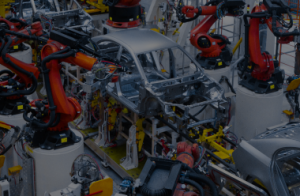India’s Electric Vehicle Market: A Look Back at 2023 Get...
Read More
How hybrid physics-
based machine learning
simulation is driving a
paradigm shift in design
Vineet Dravid
Founder, CEO oorja
Solve complex engineering problems fast and accurately with oorja’s hybrid physics-based machine learning simulation
Till a few decades back, designing a product from scratch meant extensive experimentation at the component level and prototyping. Experimentation was cost and time intensive, and prone to inaccuracies as measurement techniques were performed manually.
The rise of CAE and Multiphysics Analysis
The advent of Computer Aided Engineering (CAE) in 1970 was a game changer for product designers and engineering professionals since it facilitated faster and accurate designs. Several commercial tools advertising this functionality proliferated the market. While the CAE industry started predominantly with Structural Analysis, the concept caught on quickly, and technologies for Flow modeling (CFD), Heat Transfer, Electromagnetics, and other such engineering applications were also available.
As technologists and product designers extensively used CAE for physics based analysis, they felt the need to capture complete real world physics problems on the computer. To do so, they realized the need to solve two or more physics problems simultaneously for better representation of the product. This led to the discovery of Multiphysics Analysis. However, CAE & Multiphysics Analysis brought challenges of their own.
Today, traditional CAE & Multiphysics Analysis approaches are no longer sufficient
While access to computing resources was getting cheaper, product complexity has continued to increase. Companies needed to hire software experts and spend on computational resources, adding to the overall cost of the product development.
At the same time, the new environmentally conscious world that we live in has led to several new technologies becoming mainstream. Battery technologies have evolved. Newer, sustainable materials such as composites are becoming more popular. The behaviour of these engineered materials is vastly different from traditional materials.
Experimentation has now become much more sophisticated and streamlined, which means accurate data is easier to collect. The focus now is on speeding up product design while intelligently using the resources available to us, both computational and experimental.
How do we do this? Machine Learning shows tremendous promise.
Speeding up your design with Machine Learning and hybrid physics based approach
At oorja, we aim to perform hybrid analysis. This essentially means we use every available information whether its experimental, physics based, mathematical and data sciences to quickly and accurately solve product related issues. Our focus is on solving the problem, not the method itself. We use methods that are most pertinent to the problem at hand and provide a fast and accurate solution.
New technologies need new approaches to solve them, and our goal is to solve these complex engineering problems fast and accurately.
Try our software today and find out for yourself. Contact us here.
Latest Blog Posts
Hybrid Modeling: Bridging Physics and Machine Learning
Hybrid Modeling: Bridging Physics and Machine Learning Get Started Contact...
Read MoreAccelerated Degradation Predictions using Hybrid (Physics+ML) Simulations
Accelerated Degradation Predictions using Hybrid (Physics+ML) Simulations Get Started Contact...
Read More

